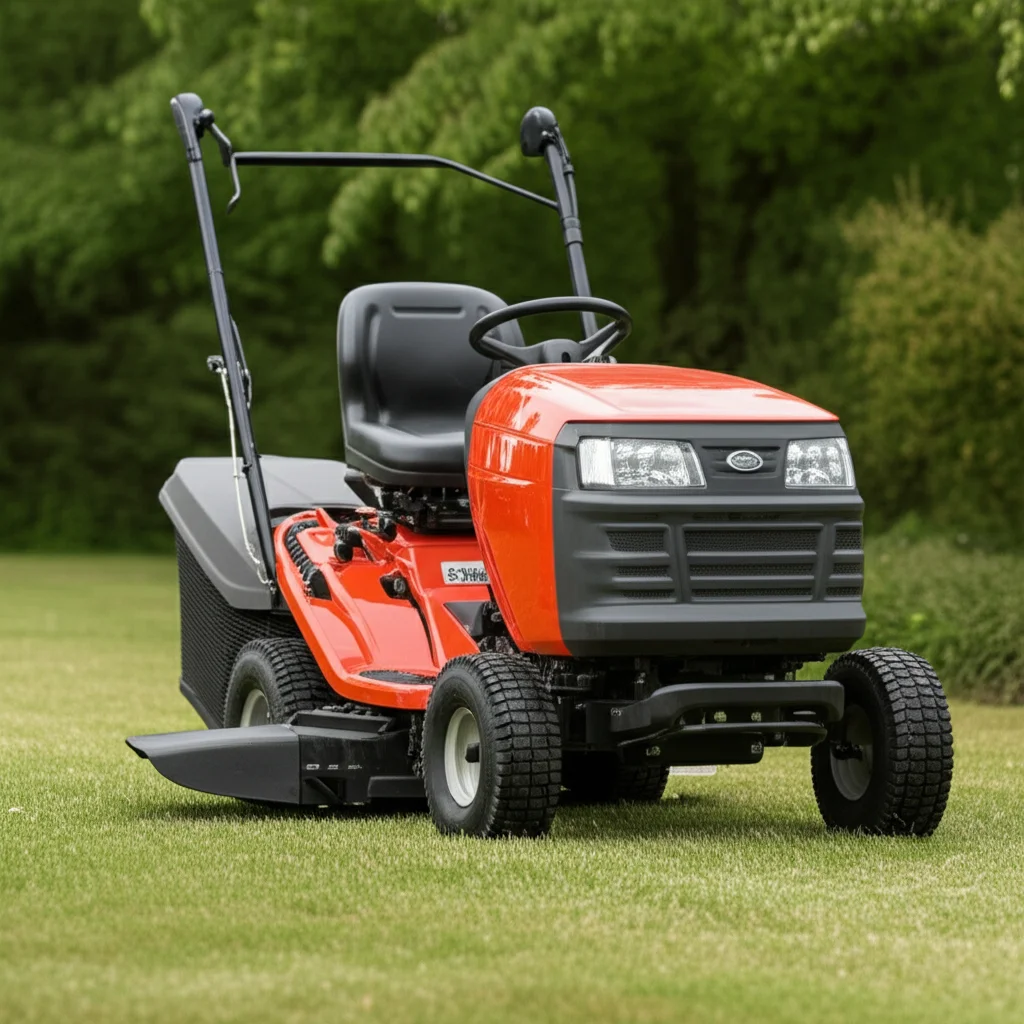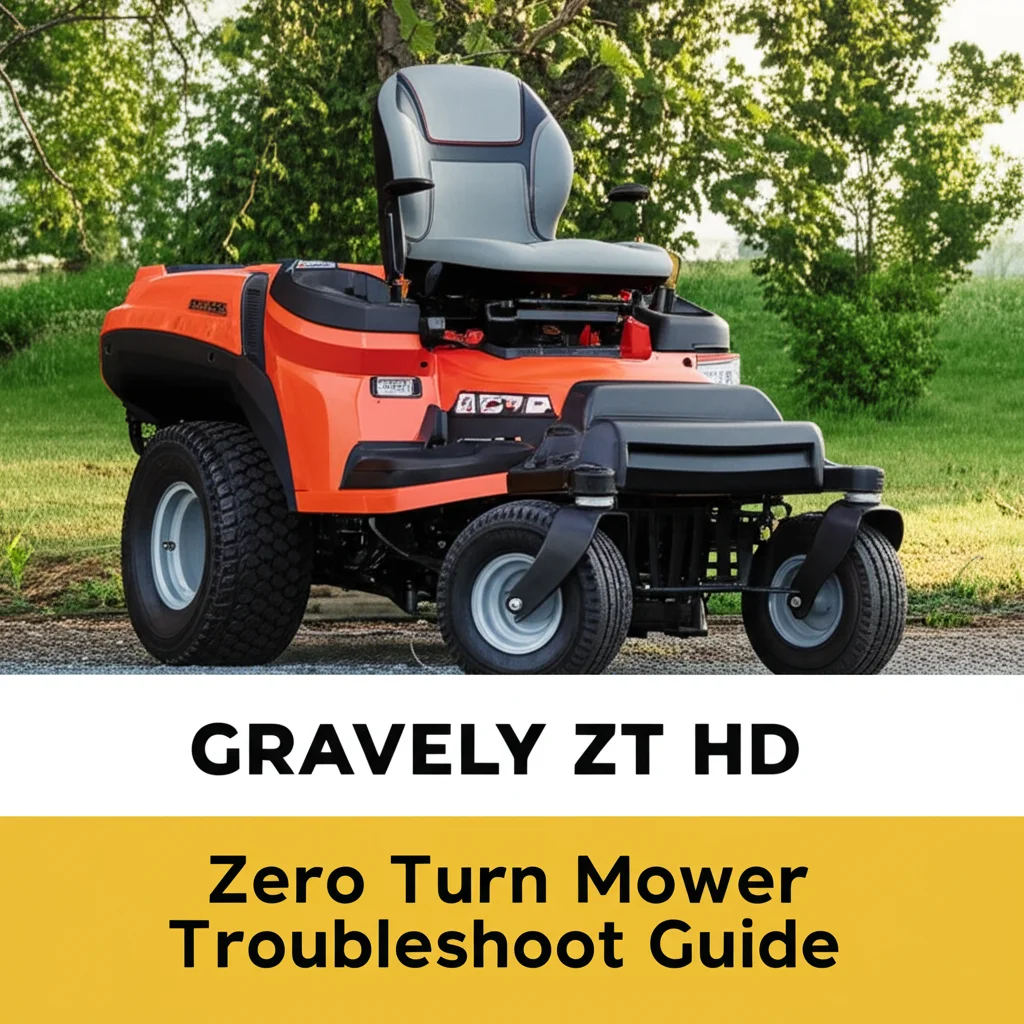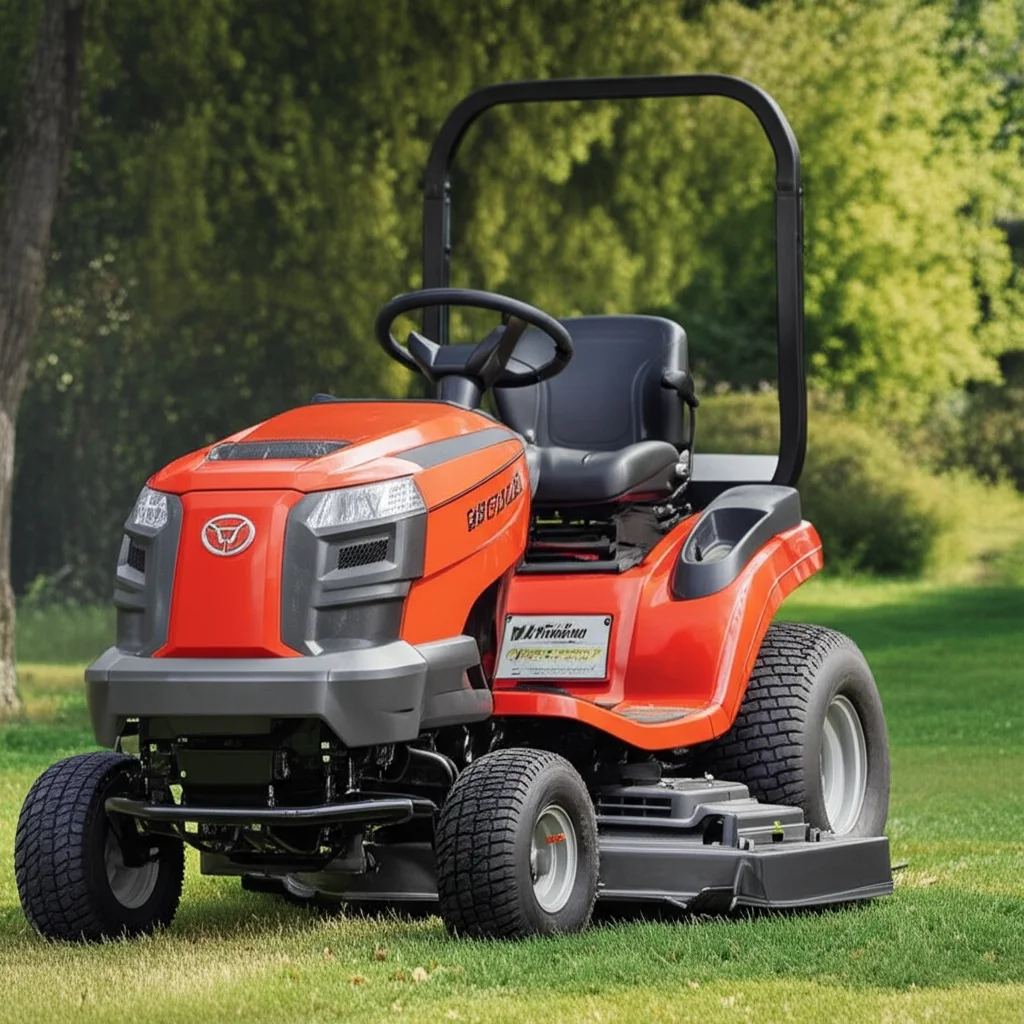· Lawn Mower Maintenance · 11 min read
Why My Troy Bilt Lawn Mower Wont Start

Troy Bilt Lawn Mower Won’t Start: Complete Fix Guide
Nothing frustrates homeowners more than a Troy Bilt lawn mower that won’t start when the grass needs cutting.
Whether you’re dealing with a Troy Bilt riding mower won’t start situation or your walk-behind model refuses to fire up, understanding the root causes and solutions can save you time, money, and endless headaches.
This comprehensive guide covers everything from simple fixes to advanced troubleshooting techniques.
Key Takeaways
• Fuel issues account for 60% of starting problems - check fuel quality, filter, and lines
• Electrical problems like dead batteries or faulty spark plugs cause 25% of failures
• Carburetor cleaning resolves most “cranks but won’t start” scenarios
• Regular maintenance prevents 80% of starting issues before they occur
• Seasonal preparation is crucial for reliable spring startups after winter storage
Quick Answer: Most Troy Bilt lawn mowers won’t start due to old fuel, clogged carburetors, dead batteries, or faulty spark plugs. Start with fuel system checks, then move to electrical components and air/fuel delivery systems.
Common Causes When Troy Bilt Lawn Mower Won’t Start
Fuel System Problems
The fuel system is the most frequent culprit when your Troy Bilt lawn mower won’t start. Gasoline degrades over time, especially during winter storage, creating varnish deposits that clog fuel lines, filters, and carburetor jets.
Old or contaminated fuel loses its combustibility after 30 days. If your mower sat unused for months, stale fuel is likely preventing ignition. The solution involves draining old fuel completely and replacing it with fresh gasoline mixed with appropriate oil ratios for two-stroke engines.
Clogged fuel filters restrict fuel flow to the engine. Located between the fuel tank and carburetor, these inexpensive components trap debris but become saturated over time. Replacing fuel filters annually prevents most fuel delivery issues.
Blocked fuel lines occur when varnish deposits accumulate inside rubber tubing. Visual inspection reveals cracked, hardened, or internally coated lines that require replacement for proper fuel flow.
Carburetor Issues
When your Troy Bilt riding mower will not start but turns over, carburetor problems are typically responsible. The carburetor mixes air and fuel in precise ratios for combustion, making it sensitive to contamination and adjustment changes.
Dirty carburetors develop when old fuel leaves residue on internal components. Jets, needles, and float bowls collect varnish that prevents proper fuel atomization. Professional cleaning or complete rebuilding restores functionality, though prevention through fuel stabilizers is more cost-effective.
Adjustment problems affect fuel mixture ratios. Vibration loosens adjustment screws over time, creating lean or rich conditions that prevent starting. Factory specifications provide baseline settings, but fine-tuning may be necessary based on altitude and operating conditions.
Similar carburetor issues plague other brands, as detailed in our Craftsman M220 lawn mower troubleshooting guide, which covers comparable symptoms and solutions.
Electrical System Troubleshooting
Battery and Charging Problems
For riding mowers, battery issues cause immediate starting failures. Even new batteries can develop problems if improperly maintained or stored in extreme temperatures.
Dead batteries show obvious symptoms like dim lights, slow cranking, or complete electrical failure. Voltage testing with a multimeter reveals battery condition - healthy 12-volt batteries should read 12.6 volts or higher when disconnected. Lower readings indicate charging needs or replacement requirements.
Corroded terminals create resistance that prevents proper electrical flow. White, green, or blue powder around battery posts indicates corrosion that requires cleaning with baking soda solution and wire brushes. Protective sprays prevent future corrosion buildup.
Faulty charging systems prevent batteries from maintaining charge during operation. Alternators, voltage regulators, and wiring connections require periodic inspection to ensure proper function. Our Craftsman riding mower electrical problems article provides additional diagnostic techniques.
Ignition System Components
Spark plugs create the electrical arc necessary for fuel ignition. These wear items require regular replacement but often indicate other engine problems through their condition.
Worn spark plugs develop gap erosion, carbon buildup, or electrode damage that prevents consistent sparking. Gap measurements should match manufacturer specifications, typically 0.030 inches for most Troy Bilt engines. Carbon deposits suggest rich fuel mixtures, while white deposits indicate lean conditions.
Faulty ignition coils produce weak or intermittent sparks that prevent reliable starting. Testing requires specialized equipment, but symptoms include difficulty starting when hot, random misfiring, or complete ignition failure. Replacement costs vary significantly between models.
Mechanical Component Failures
Engine Compression Issues
Internal engine problems create starting difficulties that require professional attention or major repairs. Compression testing reveals cylinder condition and helps determine repair feasibility.
Low compression results from worn piston rings, damaged cylinders, or valve problems. Measurements below manufacturer specifications indicate internal wear that may not justify repair costs on older equipment. Compression testing requires specialized gauges and proper technique for accurate results.
Valve adjustments affect compression and timing on overhead valve engines. Clearances change as components wear, requiring periodic adjustment according to service schedules. Incorrect valve timing prevents proper combustion cycles.
Air Intake Restrictions
Clean air is essential for proper combustion ratios. Restricted airflow creates rich conditions that flood engines and prevent starting, especially in humid conditions.
Dirty air filters block airflow and create starting problems similar to choke malfunctions. Paper filters require replacement when visibly dirty, while foam filters need cleaning with soap and oil treatment. Seasonal inspection prevents most air restriction issues.
Clogged breather systems prevent proper crankcase ventilation, affecting compression and oil circulation. These small but critical components often get overlooked during routine maintenance but significantly impact engine performance.
Seasonal Starting Problems
Winter Storage Issues
Troy Bilt lawn mower will not start after winter storage due to fuel degradation, battery discharge, and component deterioration during extended inactivity periods.
Fuel stabilization prevents varnish formation during storage. Adding fuel stabilizer before the last use of the season keeps gasoline fresh for spring startup. Without stabilizers, complete fuel system cleaning becomes necessary before reliable operation resumes.
Battery maintenance during storage prevents sulfation damage that destroys charging capacity. Trickle chargers or periodic charging maintain proper electrolyte levels and prevent freezing damage in cold climates.
Many homeowners face similar post-winter challenges, which our lawn mower won’t start after winter guide addresses in detail with specific preparation and revival techniques.
Hot Weather Starting Problems
Why won’t my lawnmower start when hot? High temperatures create vapor lock in fuel systems and affect electrical component performance, leading to hot-start difficulties.
Vapor lock occurs when fuel vaporizes in lines before reaching the carburetor. This common problem affects mowers operated in direct sunlight or high ambient temperatures. Solutions include fuel system insulation, heat shields, or allowing cooling periods between uses.
Heat-soaked ignition components lose efficiency as temperatures rise. Coils, spark plugs, and electronic modules perform differently when hot, sometimes preventing ignition until components cool down.
Step-by-Step Diagnostic Process
Initial Safety Checks
Before beginning any diagnostic work, ensure personal safety and prevent equipment damage through proper preparation procedures.
Disconnect spark plug wires to prevent accidental starting during maintenance. This critical safety step protects against injury from moving parts or unexpected engine operation.
Engage parking brakes and position equipment on level surfaces for stability during testing procedures. Remove ignition keys and follow lockout procedures for riding equipment.
Systematic Troubleshooting
Step 1: Fuel System Inspection
- Check fuel level and quality
- Inspect fuel lines for cracks or blockages
- Test fuel flow from tank to carburetor
- Examine fuel filter condition
Step 2: Electrical System Testing
- Measure battery voltage and load capacity
- Test spark plug condition and gap
- Check ignition coil output
- Inspect all electrical connections
Step 3: Air and Compression Testing
- Remove and inspect air filter
- Test engine compression
- Check valve clearances if applicable
- Examine cylinder head gasket condition
This systematic approach identifies problems efficiently while avoiding unnecessary part replacement. Professional technicians follow similar diagnostic sequences to minimize repair time and costs.
Professional vs DIY Repairs
When to Attempt DIY Fixes
Simple maintenance tasks like spark plug replacement, air filter changes, and fuel system cleaning are within most homeowners’ capabilities with basic tools and safety precautions.
Basic tool requirements include socket sets, screwdrivers, pliers, and safety equipment. Most Troy Bilt maintenance procedures require common hand tools rather than specialized equipment.
Safety considerations become paramount when working with fuel systems, electrical components, or moving parts. Proper ventilation, fire prevention, and protective equipment prevent injuries during maintenance work.
Professional Service Indicators
Complex problems require professional diagnosis and repair to avoid costly mistakes or safety hazards. Engine internal problems, electrical system faults, and warranty considerations often justify professional service.
Warranty implications affect repair decisions on newer equipment. Unauthorized repairs may void coverage, making professional service more cost-effective despite higher initial costs.
Specialized equipment needs for compression testing, electrical diagnosis, and precision adjustments justify professional service for complex problems. Home mechanics rarely possess the tools necessary for accurate diagnosis of internal engine problems.
Preventive Maintenance Tips
Regular Service Schedules
Consistent maintenance prevents most starting problems while extending equipment life significantly. Following manufacturer recommendations creates reliable operation throughout the mowing season.
Annual service requirements include oil changes, spark plug replacement, air filter service, and fuel system maintenance. These basic procedures prevent the majority of starting difficulties when performed consistently.
Seasonal preparation for winter storage and spring startup prevents damage from extended inactivity. Proper preparation procedures ensure reliable operation year after year while minimizing repair costs.
Quality Fuel and Oil Practices
Using appropriate fuel grades and high-quality lubricants prevents many engine problems while improving performance and reliability.
Ethanol considerations affect fuel system components differently than pure gasoline. Understanding ethanol effects helps homeowners make informed fuel choices that prevent starting problems and component damage.
Oil quality impacts engine longevity and starting reliability. Premium oils provide better protection and performance than economy alternatives, justifying higher costs through extended equipment life.
Environmental factors like humidity and storage conditions also affect starting reliability, similar to issues covered in our lawn mower won’t start after rain troubleshooting guide.
Frequently Asked Questions
What would cause a troy bilt lawn mower not to start? The most common causes include old or contaminated fuel, clogged carburetors, dead batteries, faulty spark plugs, and dirty air filters. Fuel-related issues account for approximately 60% of starting problems, while electrical components cause another 25% of failures.
What is the first thing to check if a lawn mower won’t start? Always check fuel quality and level first, as stale gasoline is the leading cause of starting problems. Ensure fresh fuel is present, then verify the spark plug is clean and properly gapped. These two components resolve most starting issues when functioning correctly.
Why won’t my lawnmower start when hot? Hot starting problems typically result from vapor lock in fuel lines, heat-soaked ignition components, or carburetor flooding. Allow the engine to cool for 15-30 minutes, then attempt starting. Consider adding heat shields or relocating fuel lines away from hot engine components.
How do I know if my Troy Bilt mower’s carburetor needs cleaning? Signs include difficulty starting, rough idling, black smoke from the exhaust, or the engine dying shortly after starting. If the mower cranks but won’t start after confirming good fuel and spark, carburetor cleaning is usually necessary.
Can a dirty air filter prevent my Troy Bilt mower from starting? Yes, severely clogged air filters restrict airflow and create overly rich fuel mixtures that prevent ignition. However, most dirty air filters cause performance problems rather than complete starting failure. Replace or clean air filters when visibly dirty or as part of annual maintenance.
Why does my Troy Bilt riding mower click but not start? Clicking sounds typically indicate electrical problems, most commonly a dead or weak battery. The starter solenoid clicks when activated but cannot engage the starter motor due to insufficient power. Test battery voltage and charging system function to resolve clicking issues.
What should I do if my Troy Bilt mower ran out of gas and won’t restart? Running out of fuel can introduce air into the fuel system, requiring priming or bleeding procedures to restore operation. Add fresh fuel, prime the system according to manufacturer instructions, and attempt starting. If problems persist, check for clogged fuel filters or lines that may have drawn debris when the tank went dry.
Final Words
Troy Bilt lawn mower starting problems frustrate homeowners but usually have straightforward solutions when approached systematically. Most issues stem from fuel system problems, electrical component failures, or basic maintenance neglect rather than complex mechanical faults. By understanding common causes and following proper diagnostic procedures, you can resolve many starting problems without professional assistance.
Remember that preventive maintenance costs far less than emergency repairs and ensures reliable operation throughout the mowing season. Regular fuel system care, electrical component inspection, and seasonal preparation prevent most starting difficulties while extending your Troy Bilt mower’s service life.
When DIY solutions don’t resolve the problem, don’t hesitate to consult professional technicians who possess specialized diagnostic equipment and experience with complex repairs. Your safety and equipment longevity are worth the investment in proper service when needed.




